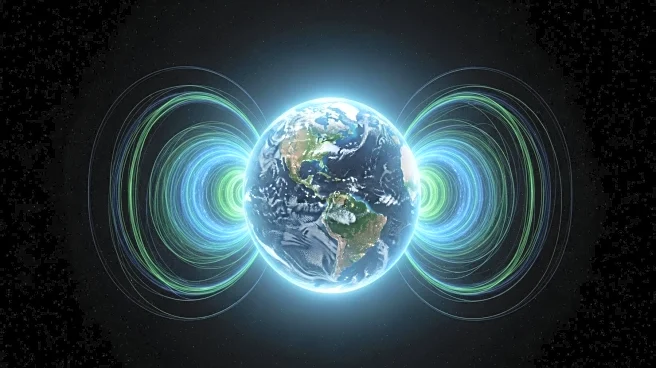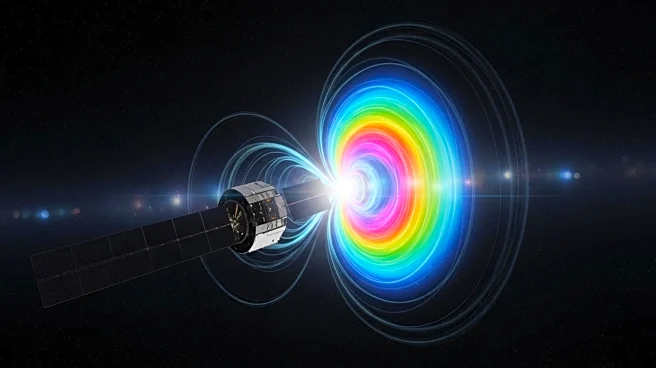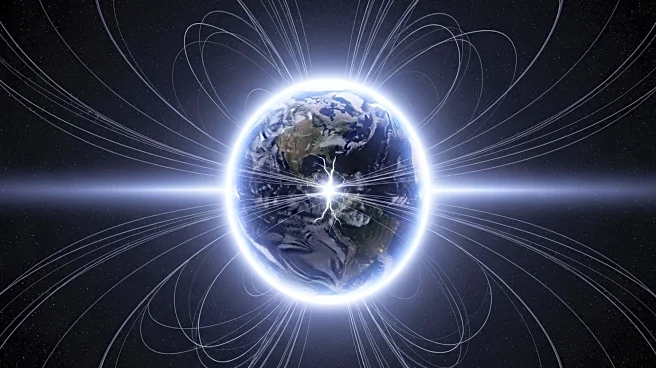What is the story about?
What's Happening?
Recent satellite data reveals that the South Atlantic Anomaly (SAA), a dent in Earth's magnetic field, has expanded significantly since 2014. The anomaly stretches across the gulf between Africa and South America, with its magnetic intensity weakening. The SAA is linked to the behavior of the molten iron in Earth's outer core, which generates the magnetic field. The anomaly poses challenges for navigation systems and increases the vulnerability of satellites to hazardous charge buildup. The European Space Agency's Swarm mission has been monitoring the anomaly, providing insights into its complexities and changes over time.
Why It's Important?
The expansion of the South Atlantic Anomaly has significant implications for satellite operations and navigation systems that rely on Earth's magnetic field. A weaker magnetic field increases the risk of charge buildup on satellites, potentially leading to operational disruptions. Understanding the anomaly's behavior is crucial for developing predictive models to mitigate these risks. The anomaly also affects radiation exposure for astronauts and high-altitude flights, highlighting the need for continued monitoring and research to ensure safety and reliability in space operations.
What's Next?
The Swarm mission will continue to monitor the South Atlantic Anomaly, providing valuable data to understand its behavior and impact. Researchers aim to develop better predictive models to anticipate changes in the magnetic field and mitigate potential risks. The ongoing study of the anomaly may lead to improved satellite design and navigation systems that can adapt to fluctuations in the magnetic field. As the anomaly continues to evolve, collaboration between space agencies and researchers will be essential to address the challenges it presents.
AI Generated Content
Do you find this article useful?














